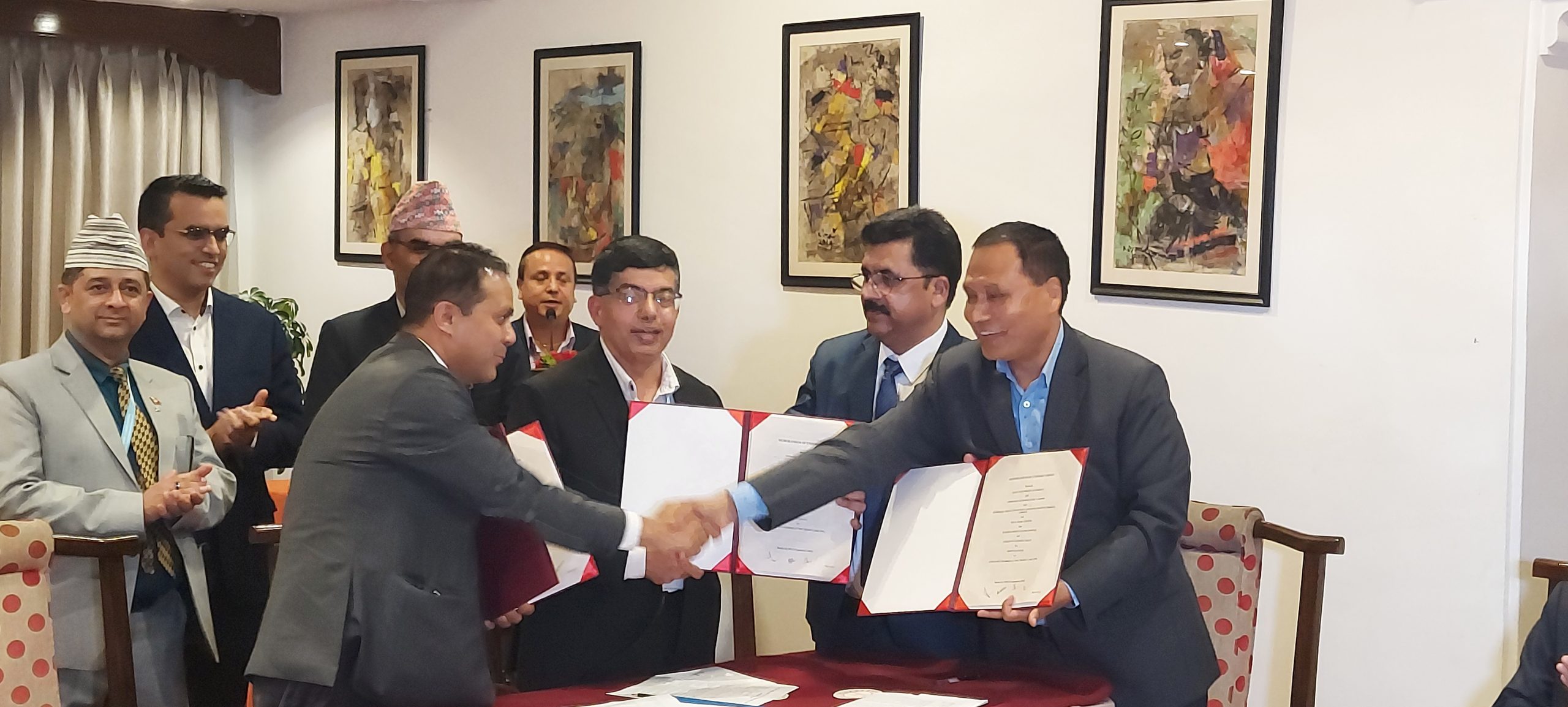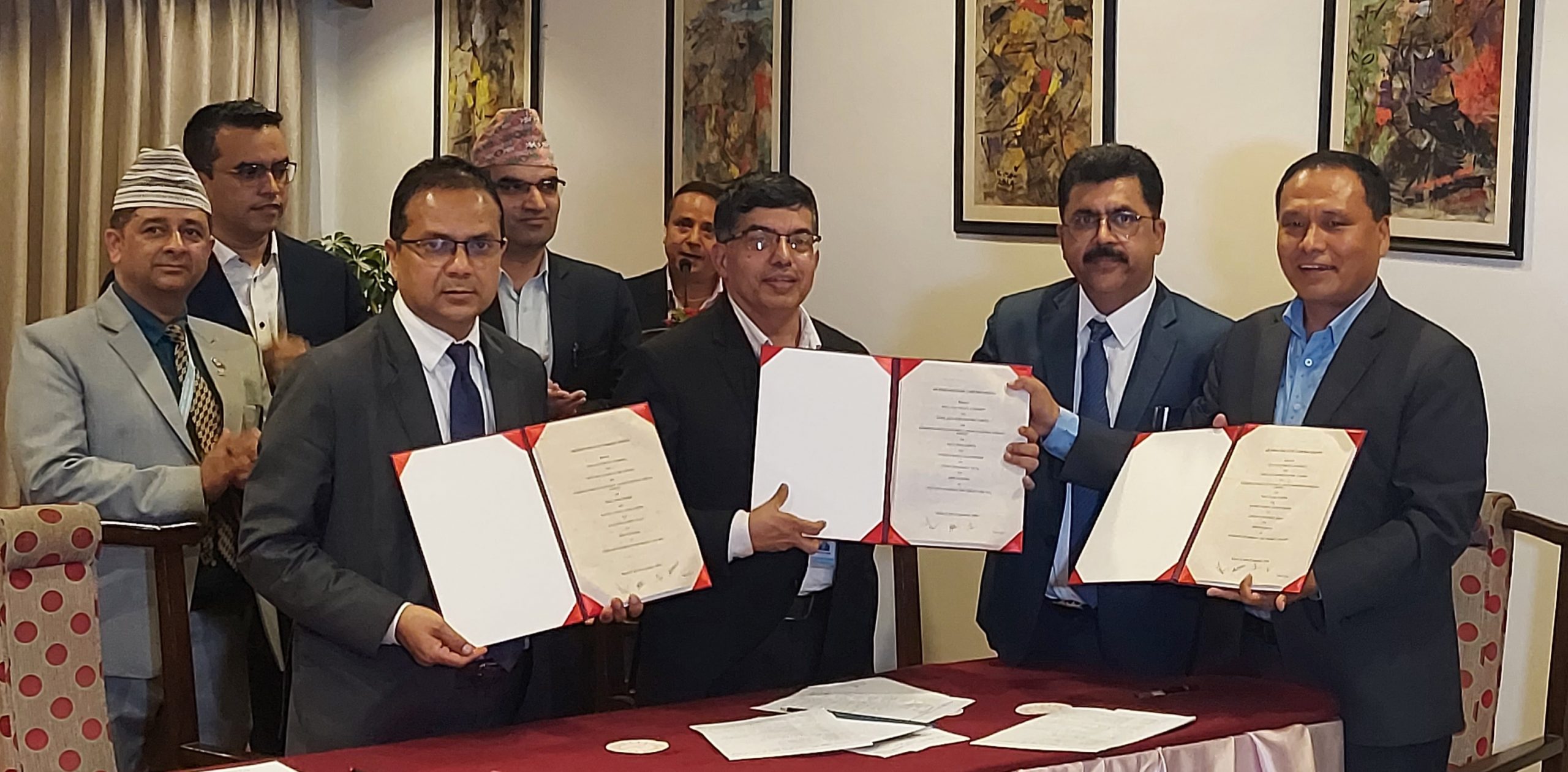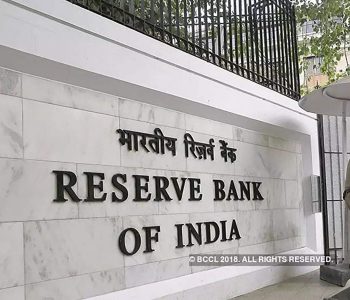A ‘four digit’ 1061 MW Upper Arun Hydel to be build under blended finance

KATHMANDU: The 1,061 MW semi-reservoir Upper Arun Hydropower Project to be built in Bhotkhola Rural Municipality of Sankhuwasabha will be promoted as a model project of ‘blended financing’ (mixed investment model).
(Blended finance is the strategic use of development finance for the mobilisation of additional finance towards sustainable development in developing countries. Blended finance attracts commercial capital towards projects that contribute to sustainable development, while providing financial returns to investors.)
The project to be built under the leadership of Nepal Electricity Authority (NEA) and will participate the federal government, provincial government, local levels of the project-affected districts, project-affected district residents, general people from all over the country, which is said to the new practice for Nepal as local governments will participate to build the hydropower project in Nepal.
Similarly, concessional loans from international multilateral development partners, and domestic banks and financial institutions will be involved in the project financing. The authority will own the majority of shares in the Upper Arun Hydro Electric Company established to build the project.
Upper Arun, which has an estimated cost of $1.750 billion (about Rs 214 billion), including interest and price increase during the construction period, will be financed by 70 percent debt and 30 percent equity shares.
The developer company has estimated approximately Rs 150 billion rupees loan, Rs 97 billion rupees will be managed by raising concessional loans from multilateral international lenders such as the World Bank and the European Investment Bank, Asian Development Bank, and Rs 53 billion rupees from domestic banks and financial institutions.
According to the NEA, the co-financing of international lenders will be led by the World Bank for the project. Under the leadership of Hydroelectricity Investment and Development Company (HIDCL), the investment of Rs 53 billion will be made through co-financing from local banks and financial institutions.
Importing hydromechanical, electromechanical and transmission line equipment of the project from abroad will cost about 30 to 40 percent of the total cost and as the said amount will be paid with dollars obtained from foreign investment.
The project will include the construction of a concrete gravity dam with arc axis on the Arun river, one of the major tributaries of the Sapt Koshi river basin, with a crest elevation of 1653 m, a maximum height of 100 m, and a total crest length of 183 m, to create a peaking reservoir with full supply level of 1640 m, a minimum operating level of 1625 m and peaking poundage of 2.41 million m3.
Kul Man Ghising, managing director of the NEA and chairman of the promoter Upper Arun Hydro Electric Company, said that semi-reservoir project will be built in the blended financing modality, which will be the first kind of its nature in Nepal. “After the execution of this project, it will create a stir in the overall development of the country.”
“In the co-financing led by HIDCL, the private sector banks and financial institutions of Nepal will also provide loans to the project. This will become the first model of blended financing, which will bring a positive movement to the country’s economy,” Ghising said, adding, Upper Arun, which has an installed capacity of four digits (1061 megawatts), will produce almost the base of the energy currently consumed in the country.
In a carrier as an NEA MD in the second year of his second tenure, Ghising said the signing of the MoU is a highly important event for Nepal and Nepal’s hydropower sector.
In the programme, a loan agreement has signed between Upper Arun project and HIDCL, which is leading the co-financing of domestic lending banks and financial institutions, in the presence of the Minister for Energy, Water Resources and Irrigation, Pampha Bhusal.

It was signed the loan agreement by Executive Director Ghising on behalf of the NEA, Chief Executive Officer Arjun Gautam on behalf of HIDCL and Managing Director Phanindra Joshi on behalf of the promoter company.
The HIDCL will manage about Rs 53 billion in the project through co-financing with various Banks and financial institutions including Nepal Bank, Rastraya Banijya Bank, Citizen Investment Trust, Employment Provident Fund and among others.
Compared with energy generation, the cost of the project is much cheaper. “The project will generate more energy during winter, said Ghising.
According to Joshi, the goal is to prepare the loan investment term sheet within 120 days from the date of signing the agreement and manage the financial closure of the project within one year.
.Minister Bhusal said that a detailed study of the project will be completed as soon as possible and construction will start after finalizing the investment issue. “The project is being discussed but will not be constructed for decades. We are making every effort to end this kind of trend and build it for the benefit of the local people,” she said.
Secretary of the Ministry of Energy, Water Resources and Irrigation, Shusheel Chandra Tiwari, said that the work should be started immediately according to the schedule set for the construction of the project.
The construction of the project is planned to start from December 2081 and be completed within December 2087. The feasibility study of the project has been completed and the selection of consultants for tender design and construction supervision is underway.
As part of the preliminary preparations for the project, the tenders submitted for the selection of construction contractors are being evaluated to construct about 21 kilometers of access roads including 2 kilometers of tunnels. The access road is being worked on with the goal of starting from next December.
The compensation for the acquisition of 225 hectares of private land required for the project has been determined. About 22 households will be physically displaced by the project. The study has shown that the environmental and social impacts from the construction of the project will be relatively low.
The project is designed to run at full capacity for 6 hours a day during the 6 months of winter when electricity demand is high. The project will produce 4.51 billion units of energy annually.
About 30 percent of this energy will be produced in winter. The generated electricity will be transmitted to the national transmission system through the proposed substation at Haytar in Sankhuwasabha through 400 kVA transmission line.














Facebook Comment